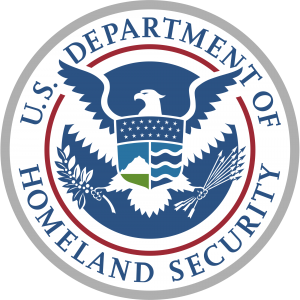Business Partners Against Terrorism - B-PAT
The PBSO Homeland Security Bureau has a program called Business Partners Against Terrorism or B-PAT. Derived from the reality that 85% of America’s infrastructure is owned and/or operated by the private sector, this initiative develops a close relationship between PBSO and the private sector.
If you have information regarding suspicious activity that may relate to terrorism, please call the Terrorism Hotline at 800-429-0006.
If it is an emergency, please call 9-1-1.
Community Partners Against Terrorism - C-PAT
The PBSO Homeland Security Bureau has a program called Community Partners Against Terrorism or C-PAT. This initiative better prepares private citizens to report suspicious activity to law enforcement, especially as that activity relates to potential acts of terrorism.
A Suspicious Activity Report (SAR) is used to document any activity that may be related to terrorism. Below is a list of suspicious behaviors and descriptions.
Eliciting Information
Questioning individuals at a level beyond mere curiosity about particular facets of a facility’s purpose, operations, security procedures, etc., that would arouse suspicion in a reasonable person.
Testing of Security
Interactions with or challenges to installations, personnel or systems that reveal physical, personnel or cybersecurity capabilities.
Recruiting
Building operations teams and contacts, personnel data, banking data, or travel data.
Photography
Taking pictures or video of facilities, buildings, or infrastructure in a manner that would arouse suspicion in a reasonable person. Examples include taking pictures or video of access points, personnel performing security functions (patrols, badge/vehicle checking), security-related equipment (perimeter fencing, security cameras), etc. All reporting on photography should be done within the totality of the circumstances.
Observation/Surveillance
Demonstrating unusual interest in facilities, buildings, or infrastructure beyond mere casual or professional (e.g., engineers) interest such that a reasonable person would consider the activity suspicious. Examples include observation through binoculars, taking notes, attempting to measure distances, etc.
Materials Acquisition/Storage
Acquisition of unusual quantities of precursor materials such as cell phones, pagers, fuel and timers, such that a reasonable person would suspect possible criminal activity.
Acquisition of Expertise
Attempts to obtain or conduct training in security concepts (military weapons or tactics) or other unusual capabilities that would arouse suspicion in a reasonable person.
Weapons Discovery
Discovery of unusual amounts of weapons or explosives that would arouse suspicion in a reasonable person.
Sector-Specific Incident
Actions associated with a characteristic of unique concern to specific sectors (such as the public health sector) with regard to their personnel, facilities, systems or functions.
Breach/Attempted Intrusion
Unauthorized personnel attempting to enter or actually entering a restricted area or protected site. Impersonation of authorized personnel (e.g., police/security, janitor).
Misrepresentation
Presenting false documents, and/or identification to misrepresent one’s affiliation to cover possible illicit activity. Misusing insignias, uniforms, etc.
Theft/Loss/Diversion
Stealing or diverting something associated with a facility (e.g., badges, uniforms, identification, emergency vehicles, technology or documents).
Sabotage/Tampering/Vandalism
Damaging, manipulating or defacing part of a facility/infrastructure or protected site.
Cyberattack
Compromising or attempting to compromise or disrupt an organization’s information technology infrastructure.
Aviation Activity
Operation of an aircraft in a manner that reasonably may be interpreted as suspicious or posing a threat to people or property.
Expressed or Implied Threat
Communicating a spoken or written threat to damage or compromise a facility or infrastructure.
If you have information regarding suspicious activity that may relate to terrorism, please fill out the form below. If it is an emergency, please call 9-1-1.
ICE Victim Notification Program
U.S. Immigration and Customs Enforcement (ICE), Homeland Security Investigations (HSI), is committed to protecting the public and ensuring the rights of victims are carefully observed. HSI administers the Victim Notification Program which allows eligible victims and witnesses to obtain reliable and timely information regarding a criminal alien’s release from custody. Victims and witnesses are required to register with ICE in order to receive notification of a criminal alien’s release.
If you are a victim or witness of a criminal alien, please click on this link for more information, including the required registration form:



